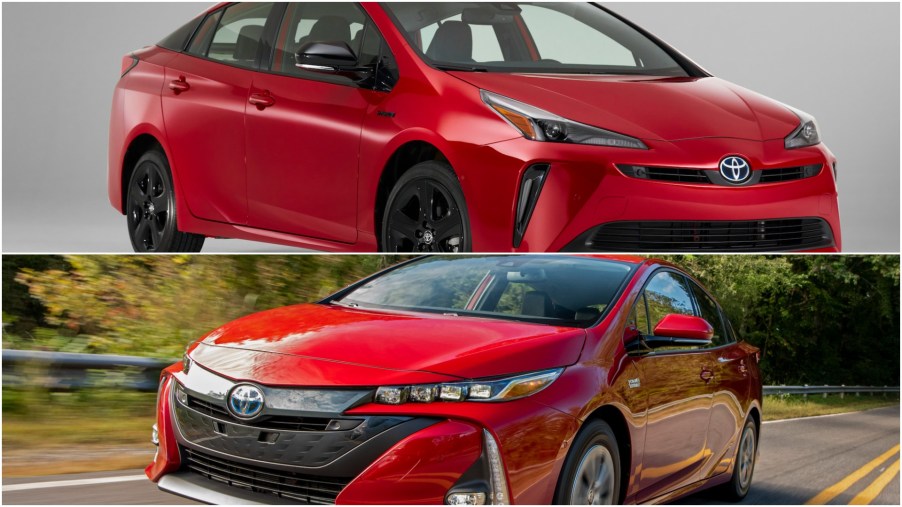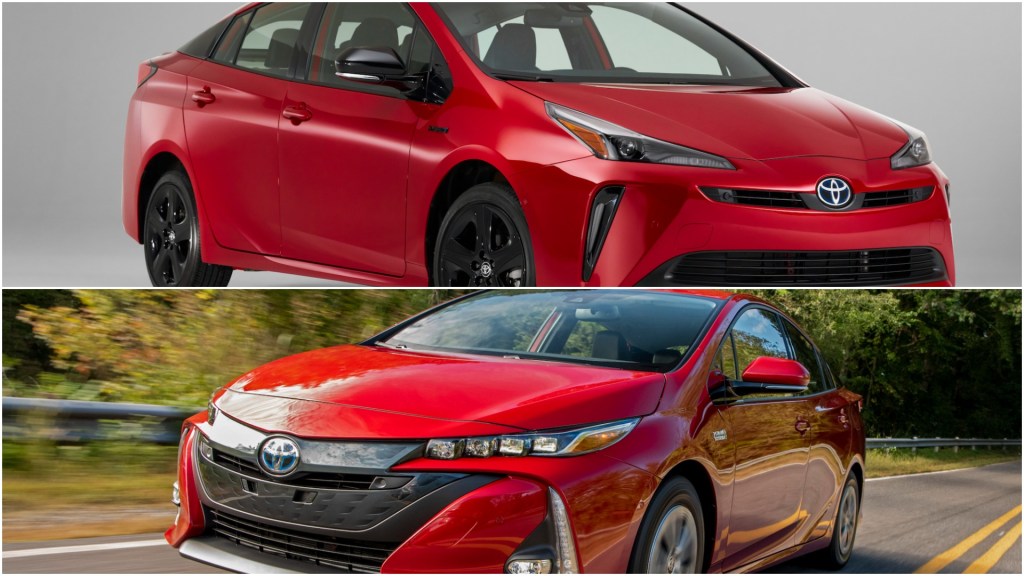
Prius vs. Prius: 2021 Toyota Prius vs. 2021 Toyota Prius Prime
When it comes to hybrids, there’s probably no car as well known as the Toyota Prius. It’s had a long history, and along the way, Toyota created new versions of the Prius, including the Prius Prime. Here’s a look at these two popular Prius versions and what’s great and not so great about them.
The many Prius generations that came before
The history of the Prius is a long one because it’s been sold in the United States for over 20 years. The Toyota Prius became a symbol for eco-friendly cars in the mid-2000s. Fuel prices were high, and cars like the Hummer were guzzling up a lot of gas. So many folks turned to the Prius and its excellent fuel economy. This popularity allowed Toyota to create a few offshoots. But they wouldn’t last.
The first offshoot was the Prius v, and not long after that came the Prius c. Both debuted for the 2012 model year, and both were hatchbacks. The c was the smaller and cheaper version, but sales for both weren’t great. Toyota canceled the Prius v after the 2017 model year, and the Prius c died after the 2019 model year.
But the one offshoot that survived was the Prius Prime. Toyota introduced it for the 2012 model year, and unlike the regular Prius, the Prime is a plug-in hybrid. This is still the defining difference between the two, but there are more.
A comparison of the 2021 Prius and 2021 Prius Prime

Off the bat, the Prius is cheaper than the Prime. The Prius starts at about $24,500, while the Prime starts at about $28,000, U.S. News reports. However, the Prime is eligible for a federal tax credit worth $4,500, allowing Prime customers to get that money when they file their taxes.
That price difference is mainly because of the powertrains, and the Prime makes up for it. In regular hybrid mode, both Prius models get about the same gas mileage. The Prius gets about 55 mpg, while the Prime gets about 54 mpg. But the Prime can go 25 miles in battery-only mode, and it gets 133 MPGe when its battery is added to the equation.
That’s why U.S. News says Prime owners should save $100 per year over Prius owners. However, that battery steals cargo space in the Prime. The Prius provides 27.4 cubic feet of cargo room behind the rear seats, while the Prime offers only 19.8 cubic feet.
The pros and cons of both models
Ultimately, the two Prius have more in common than not. However, there are other small differences between the two. For example, the regular Prius comes with a Wi-Fi hotspot as a standard feature, but the Prime doesn’t. U.S. News likes the Prime’s interior design a bit better, but both have the same issues. Both boast excellent safety and reliability ratings, though.
So the better Prius ultimately depends on what you want in a car and how much you can spend. The Prime’s battery pack can be useful for city driving, but its smaller cargo capacity hurts it for errands. The Prime is more fuel-efficient, but $100 a year in extra savings isn’t a huge difference over their starting prices.
There’s a lifestyle factor, too. The Prius is much like any other car, but the Prime is different thanks to its battery-only mode. U.S. News ultimately gave the regular Prius the win, but the Prime can be great for many folks.



